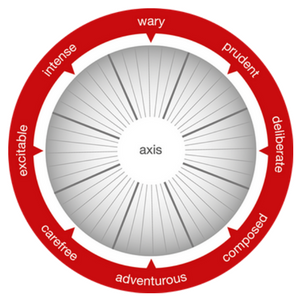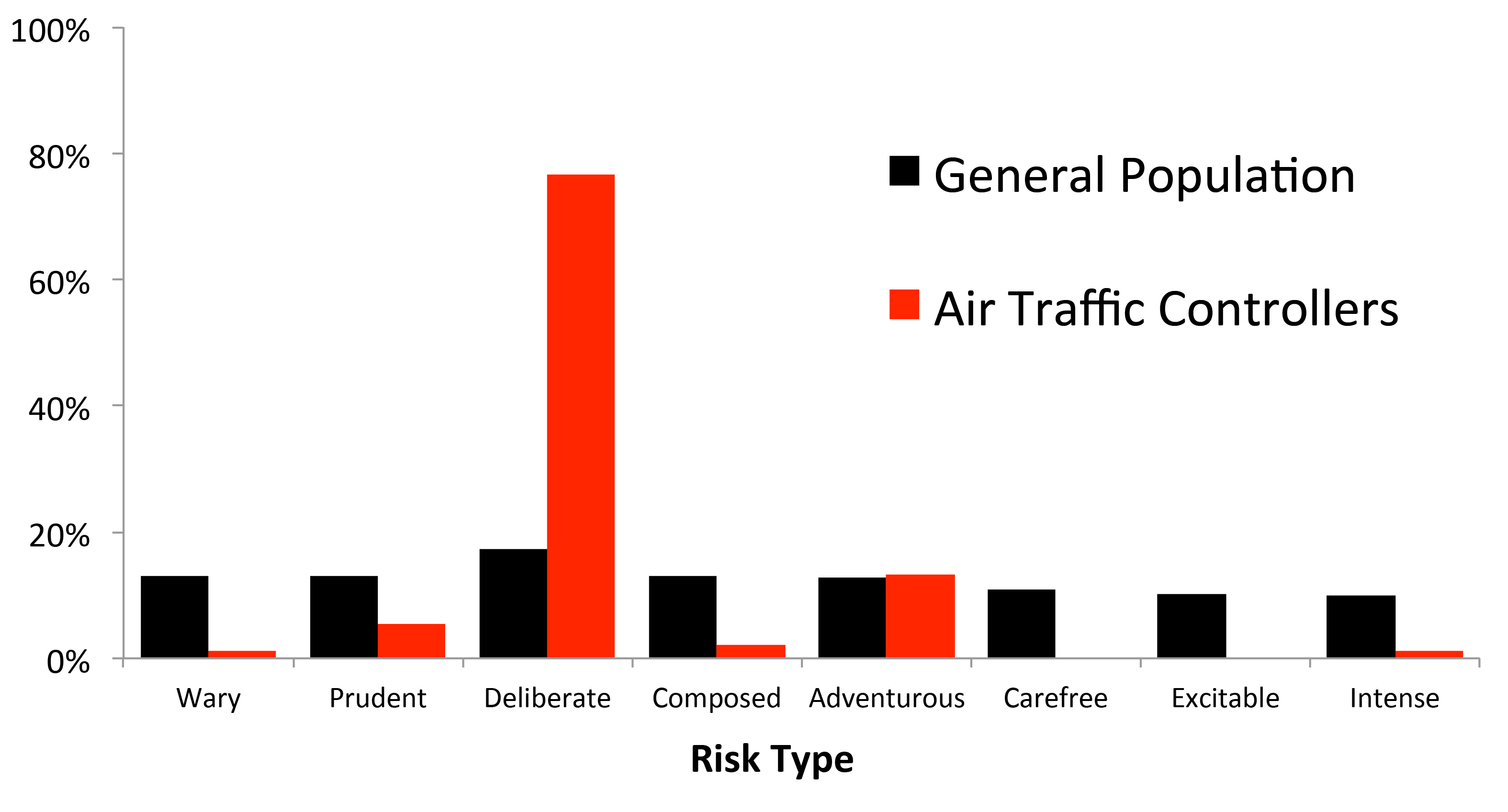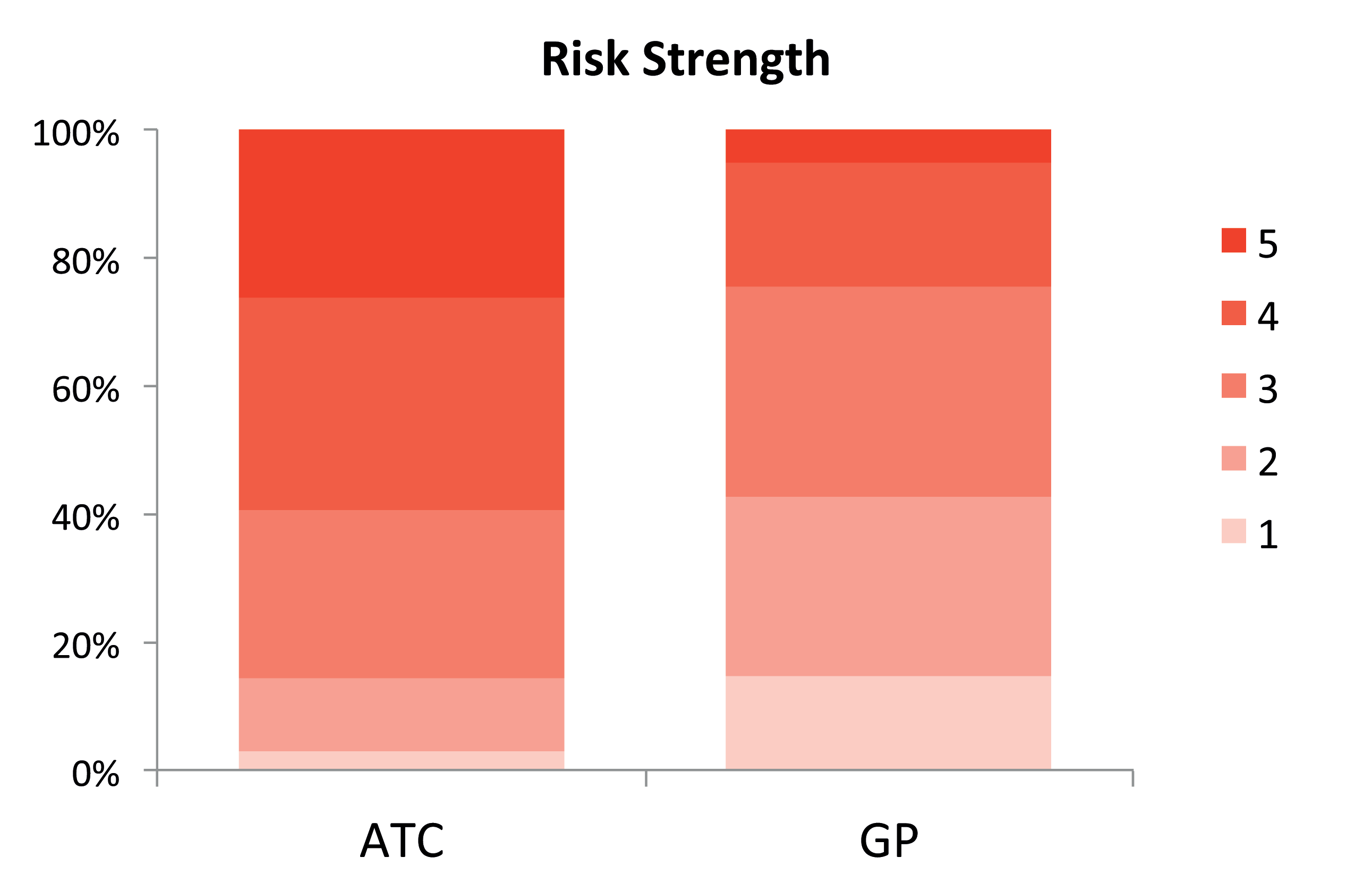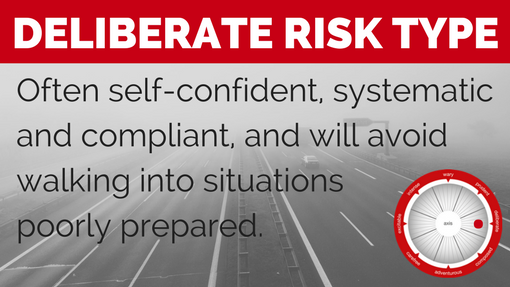Do Air Traffic Controllers Have A Risk Type?
When it comes to handling high-stake risks on a day-to-day basis, Air Traffic Controllers have few rivals. Traditional risk management approaches focus on training, procedures, the work environment, and employee health, but the interaction between personality and risk remains comparatively unexplored.
The Risk Type Compass
The lack of understanding of the relationship between risk and personality is addressed by the Risk Type Compass (RTC) – a personality assessment that focuses upon differences in how individuals perceive, manage and make decisions about risk. Based on extensive global psychological research, it places individuals into one of 8 distinctive ‘Risk Types’ illustrated in the graphic below, providing insights that have important implications for individuals, teams, and organisations.

Situation
An Air Traffic Controller group asked PCL to see if there is a ‘type’ of person who fits their work profile.
Results
Three quarters of the sample were revealed to be members of the Risk Type Compass’ ‘Deliberate’ type.
Implications
Understanding Risk Type can improve selection and development and aid in understanding the skills needed to succeed at the role.
So, Do Air Traffic Controllers Have A Risk Type?
To explore this question, we analysed the RTC responses of 90 individuals from the latter stages of an Air Traffic Controller recruitment process. Initial results point to a resounding ‘yes’, but it is only when compared against a general population sample of 8,000 individuals that the extent of these differences become fully apparent.

As indicated by the graph above, over three quarters of the Air Traffic Controller sample were categorised as Deliberate Risk Types, greatly exceeding the 17% represented in the general population. A complete absence of Carefree and Excitable Risk Types is also notable, as together these reflect around a fifth of the general population. However, the distinctiveness of the sample did not end with the distribution of Risk Types.
Risk Type Strength refers to the distance of the individual from the Risk Type Compass’ central axis, and reflects how closely the individual will relate to their Risk Type description – the closer an individual is to the outer edge of the Compass, the stronger their Risk Type Strength. When compared with Deliberate Risk Types from the general population, the Air Traffic Controller sample were five times more likely to fall into the strongest ‘Strength 5’ category, as reflected in the graph opposite.

What Is A Deliberate Type?

Calm, calculated and sure-footed, Deliberate Types are not easily unnerved, but they test the ground thoroughly and like to do things ‘by the book’. They will approach tasks in an analytical and business-like way and will like to plan ahead and be well prepared.
Their position on the Compass places them in opposition to the Excitable Risk Type, whose decisions are fuelled by enthusiasm for exciting ideas and opportunities, but tempered by sensitive risk antennae. Excitable Risk Types may wrestle over decisions, but will enthusiastically proceed once committed.
Implications
An individual’s Risk Type is a reflection of their perception, tolerance and propensity towards risk taking and this insight can be applied in various ways. When used in conjunction with other metrics, the Risk Type Compass can facilitate discussion around a variety of risk-related topics, and these can benefit processes involved in the selection and personal development of individuals in the Air Traffic Controller industry.
Each Risk Type encompasses various strengths and challenges that influence how individuals approach and complete tasks. The self-awareness generated by the Risk Type Compass can aid in identifying the most suitable and effective strategies for that individual to adopt in dealing with any challenges and to improve performance.
An example for Deliberate Risk Types could be the need to appreciate that whilst their calm and business-like manner will usually prove a valuable asset in coping with the stress of the Air Traffic Controller role, that same calmness may also prove to be a barrier to communicating the potential urgency of a situation to pilots.
Understanding variation in these factors will aid in selection, development and team building programs to ensure an organisation achieves its desired balance.